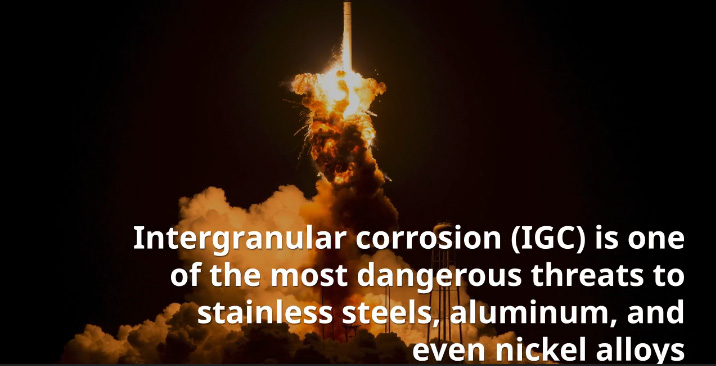Intergranular Corrosion of Stainless Steel Tubes
When austenitic stainless steel tube are heated or cooled through the temperature range 450 °C - 850 °C(800-1650°F), chromium tends to combine with carbon to form chromium carbides. The carbides precipitate preferentially at grain boundaries depleting chromium from the adjacent areas. This reduces the corrosion resistance of the chromium depleted areas, sensitizing the alloy to Intergranular Attack (IGA).
The extent of carbide formation is dependent upon time at temperature and the carbon content of the alloy. Thus, exposure in the temperature range stated does not automatically mean that sensitization, or IGA will occur.
Sensitization heat treatment may also result from slow cooling from solution annealing temperatures, or stress relieving - after welding - in the 450°C - 850°C (800 to 1650°F) temperature range. In welded fabrications, When austenitic stainless steel is heated (such as welding) or slowly cooled in this temperature range for a long time, intergranular corrosion sensitivity is generated. Sensitization and IGA may occur in corrosive environments in a rather narrow band on either side of or on the side opposite the weld, known as the heat affected zone (HAZ).
It is important to note that even if sensitization does occur, it is not of significant consequence unless the alloy is exposed to a corrosive environment. Sensitized stainless steel performs in a normal manner and safe manner in non-corrosive applications.
Order of Resistance
| 904L |
Highest |
This table lists some of the common stainless steel as to general resistance to pitting or crevice corrosion in aqueous environments where corrosive conditions may exist. |
| 317L |
|
| 329 |
|
| 316/316L |
|
| 304/304L |
|
| 430 |
|
| 410 |
|
| 420 |
Lowest |
Methods of Minimizing Intergranular Attack - IGA
1) Solution anneal above 1040 ° C (1900° F) followed by a rapid quench.
2) Use type 347, a Cb stabilized grade, or 321, a Ti stabilized grade.
3) Use a low carbon, 0.035% max. carbon grade such as 304L, 316L, 317L or 904L.
4) Use post-weld heat treatment.
With today's technology, carbon is economically reduced to very low residuals. The low carbon grades are the standard for welded fabrication.
ASTM A262 practice A to E are standard tests to determine susceptibility to IGA. Practice E, the Huey test, is widely used.

Metallographic Test - Metallography Testing
Metallographic Test Report
Stress Corrosion Cracking (SCC)
Chloride Stress Corrosion Cracking
Stainless Steel Corrosion
Corrosion of Piping
Corrosion Process
Surface Coatings for Corrosion
Corrosion Resistant Material
Bi- Metallic Corrosion.Galvanic Corrosion
Intergranular Corrosion
Intergranular Corrosion of Stainless Steel Tubes
Corrosion Resistant Stainless Steel Tube
Corrosion Resistance of Stainless Steel Tubes
Seawater Resistance of Stainless Steel Tubes
Corrosion Mechanism in Stainless Steel Tube
ASTM A262 Intergranular Corrosion Test IGC
ASTM E112 Standard Test Methods for Determining Average Grain Size
Methods of minimizing chloride stress corrosion cracking
|
